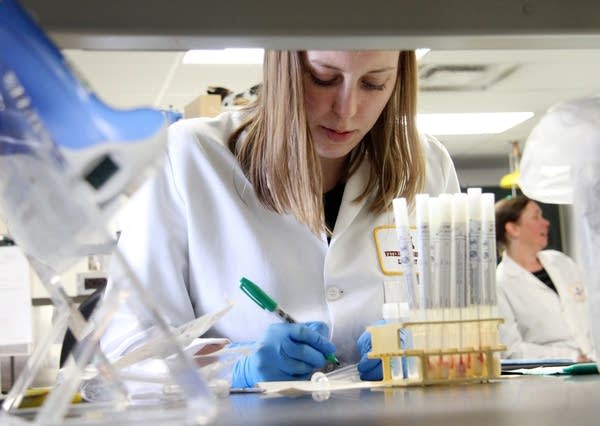Avian flu samples flood U's vet lab as outbreak escalates

Amanda Falkstein, junior scientist, set up a few sample tubes at the U laboratory on Wednesday.
Riham Feshir | MPR News
Go Deeper.
Create an account or log in to save stories.
Like this?
Thanks for liking this story! We have added it to a list of your favorite stories.


